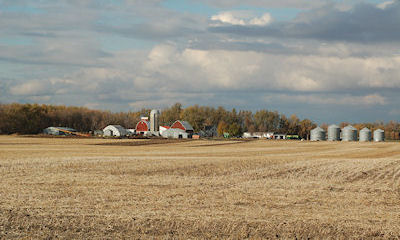February 4, 2016

It was the regular meeting of employees on the farm. Everyone gathered in the farm office where some sat and others stood for the meeting that lasted longer than an hour. But everyone appeared to be engaged.
The farm manager discussed the current flush of calvings, including the number of deaths among the 107 calves born in December. Then the manager gave some reminders about what to watch for when a cow is close to calving: “pay attention to body language (of the cows)”.

What does a good employee meeting look like?
The manager reported that the slip and fall count was zero, an important metric where the cows had to travel outside to the parlor. This was cause for congratulations and led to a discussion about the care of the walkways. One employee volunteered to keep sand stockpiled.
Another cause for celebration was the completion of a long-term project – jackhammering the concrete out of the last of the stalls. The manager and owner reinforced the reason; cow comfort is critically important. However, the owner took the blame for a facility problem that he said they had taken too long to correct. “Three years a problem, a day to fix.”
Another project update was about new LED lighting. Group four was complete, and work was continuing in group two. The owner reminded employees to “let us know what needs fixed.”
It was no surprise that there was a discussion about equipment. A gate had been hit. “If you hit something, say something”. And there were reminders about the proper use of equipment.
Another topic: “does anyone know what the somatic cell count (SCC) is?” An employee piped up and reported the number. That led to a discussion about their goal for SCC; a goal they were not meeting at the time.
As an educator with Michigan State University Extension, I had asked to sit in on the meeting because the manager had mentioned that animal handling was on the agenda. They used a YouTube video on dairy cattle handling skills from University of Wisconsin Extension.
This video was a good demonstration of proper handling in several situations on the farm. Management showed this as a follow-up to the discussion that took place at the previous employee meeting, when employees had signed an animal care commitment.
~~~PAGE_BREAK_HERE~~~
The owner led a discussion about parlor efficiency because when cows are in the holding area “they are not creating milk”. Work efficiency also has downstream effects on others whose work depends on the timing at the parlor. In order to improve work efficiency on testing days, they have added a third person to the parlor shifts. But, he reminded them, “you have to add value”.
Employee care is a key part of their values and culture: “nobody is working 70 hours a week, anymore”. They want employees to have a life and when they work, to be productive and efficient. The owner said that he would rather pay them more per hour for fewer hours than to pay less and have them work more hours. Higher productivity, fewer hours worked and higher pay is a win-win for the farm and farm employees.
What made this employee meeting successful:
1. It was positive. Even though there had been equipment misuse and SCC wasn’t at goal level, the focus was on what was positive and what could be done to make improvements. They celebrated accomplishments with at least mention of them.
2. Employees were addressed as teammates. Questions and input were encouraged. Employees were held to a high standard and input from them was valued. In the case where the owner had been slow to react to a facility problem, he took responsibility for that.
3. They learned together. During the animal handling video, the owner remarked “I just learned something” and then talked about it.
4. Success was the goal – for the farm and for the employees. Management was hesitant to make a change that, while better, may not be something they could always do, saying “We don’t want to set ourselves up for failure. Therefore, we are careful about starting new things until we can be sure to do them regularly.”
5. Employees were challenged. The owner closed with this bit of challenge: “Everyone of you have decisions to make every day. Are you going to do things right or just ignore it?”
Each farm and each management team are different. Meetings can be a good way to communicate effectively with everyone and to build teamwork. This is not the only way to do a farm employee meeting; find what works for you. When conducting meetings there will be things that work and things that fail. However, communication with employees is essential and this meeting provided a good example of it.
Durst writes for Michigan State University Extension
You May Also Like




